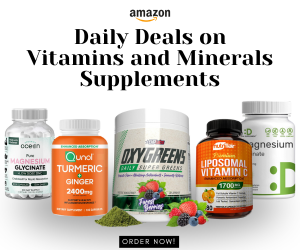
Protein is the building block for every tissue, cell, and hormone. Additionally, eating protein regularly is critical if you want to grow and maintain muscles. The next time you’re hungry, choose a high-protein snack when you’re hungry can help you meet your protein needs. Keep reading to learn about our go-to options.
Protein-rich foods

Protein is found in animal and plant sources, and according to the USDA nutrition guidelines, one serving of protein should fill a quarter of your plate at meals. You can satisfy this nutrition requirement by eating a variety of foods, including:
- Poultry (chicken, turkey, etc.)
- Lean cuts of red meat (beef, pork, etc.)
- Beans (kidney beans, chickpeas, lentils, etc.)
- Tofu and other soy products
- Eggs
- Yogurt (Greek yogurt has the highest protein content)
- Cottage cheese
- Nuts and seeds (including nut butter)
- Fish and seafood (including fresh or tinned options)
Most adults will need approximately 1g of protein per kilogram, but needs could be much higher if you’re physically active. You can ask a dietitian to calculate the right number for you.
As an example, let’s calculate how much protein a 200lb person would need daily. We’ll use the generally accepted value of 1g of protein per kilogram. First, convert pounds to kilograms (200 lbs is approximately 90kg). Next, multiply the kg weight by 1g of protein. This person should aim for 90g of total protein per day.
Protein snack ideas

Here are easy protein snack ideas you can make:
- ¼ cup of cottage cheese spread over whole-grain toast. Add fresh tomato slices and green onion.
- Greek yogurt with nuts, seeds, and diced apple. Sprinkle with ground cinnamon for extra flavor.
- Hard-boiled eggs served on whole-grain crackers. Add a slice of cheese and cucumber for more nutrients.
- Mixed bean salad dressed with olive oil and vinegar. Add plenty of fresh herbs to increase the appeal.
- Chicken salad is served on a whole-grain English muffin.
- Canned tuna served with toasted whole-grain pita bread.
- Overnight oats with Greek yogurt, sunflower seeds, chia seeds, berries, milk, and protein powder.
Protein powder snacks

Protein powders might be useful if you can’t meet your protein requirements through food. You’ll need to be diligent about picking a safe and reputable brand because protein powders aren’t regulated in the US and may contain suspicious ingredients. Your doctor can recommend a safe option for you.
You can add a small amount of protein powder to:
- Pancake and waffle batters.
- Smoothies
- Porridge and overnight oats.
- Muffins and other baked goods.
On-the-go protein snacks

If you’re traveling, commuting, or running errands, having on-the-go protein snacks on hand can be beneficial. Taking a few minutes to prepare these snacks before leaving the house can save you money (because you’re less likely to dine out unexpectedly) and help you adhere to your nutrition goals.
Here are delicious protein-rich snacks you can pack:
- Homemade trail mix with unsalted nuts and dried fruits.
- No bake-energy bites are made with rolled oats, protein powder, honey, dried cranberries, and peanut butter.
- Individual cheese-snack.
- Roasted chickpeas or soynuts.
Another option is to buy a packaged protein bar. Find a brand that contains whole ingredients and at least 8g of protein per serving.
Enjoy healthy high-protein snacks wherever you go
It’s easy to carry the best high-protein snacks when you plan your meals and snacks in advance. Remember that more protein isn’t necessarily better for your muscle maintenance, and instead, you should aim to satisfy your basic requirements. To keep snack time exciting, rotate your options and use herbs and other seasoning agents to add more variety to your dishes.
FAQ
What snacks are very high in protein?
Snacks that contain at least 20g of protein include:
- Greek yogurt with nuts.
- Two hard-boiled eggs with whole-grain crackers.
- Tuna salad on whole-grain English muffin.
- Lentil and chickpea soup with vegetables and herbs.
What foods help build muscle and increase energy?
Eating protein-rich foods while following an exercise program can help your body build muscle and increase energy. These foods include animal meats and by-products (Greek yogurt and eggs), as well as plant-based options like nuts and beans.
What is the best protein for muscle maintenance?
Animal sources of protein are easily metabolized and can support muscle maintenance. Plant-based sources can help, too, although you’ll need to eat more to meet your protein needs. Some whey-based protein supplements can also be beneficial.







